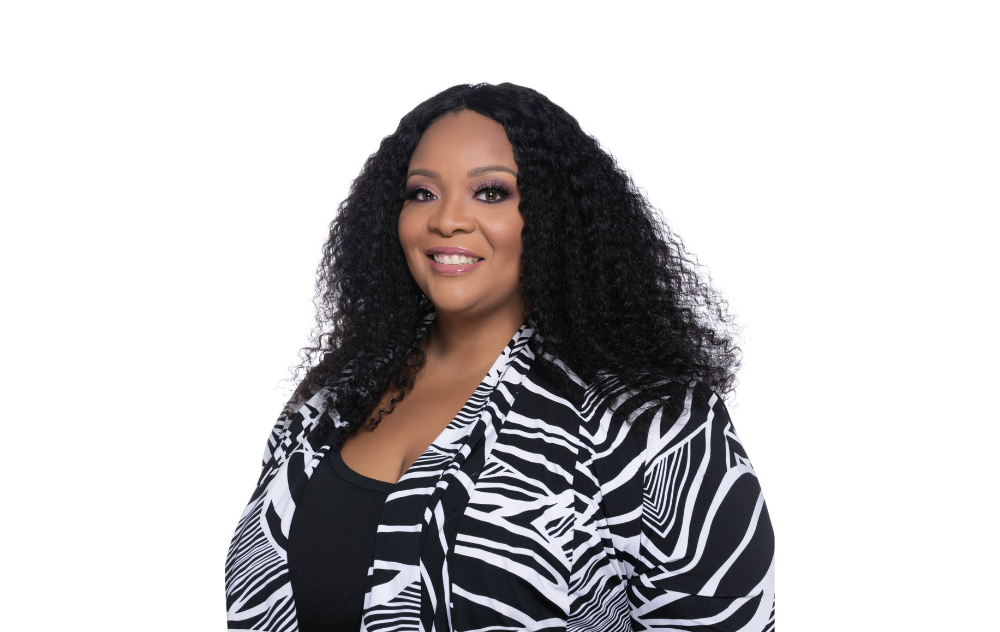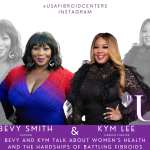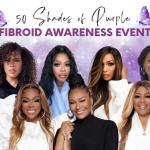
Fighting Fibroids Led to Creating a Tech Platform to Make a Difference for Patients of Color
It’s not a surprise that Black and Latino patients often have their pain and health problems dismissed by doctors due to racial disparities. But when our newest ambassador, Kimberly Wilson experienced the lack of culturally competent doctors first-hand, it led to her determination to change the status quo.
Wilson was diagnosed with uterine fibroids back in 2017 after she had lost 100 pounds.
“I had gotten to a plateau that no matter how much I worked out or didn’t eat, I stopped losing weight. But even worse, I always had constipation and abdominal pain,” Wilson said.
At the same time, Wilson was experiencing heavy periods and bloating. She admits to suffering in silence. “As black women, we’re taught you have to keep your chin up,” Wilson said. But when a trip to Las Vegas with friends landed her in a hospital bed with excruciating pain, it was the beginning of her fibroid journey. “When they came back and told me I had fibroids, I had never heard of them.” Moreover, there was a lack of education about fibroids, the next steps, or even treatment options.

Wilson had more than 30 fibroids on her uterus, with the largest being “the size of a grapefruit,” she says. As a result, she experienced frequent urination, constipation for weeks at a time, back and leg pain, and pelvic pressure, she added. “I had severe abdominal pain that would have me crouched on the floor, and nothing was able to help,” Wilson said.
According to the University of Michigan Health Lab, nearly two out of three women experience uterine fibroids by the age of 50. In addition, Black women are three times more likely to be diagnosed with fibroids than white women. They are also more likely to develop fibroids at an earlier age and experience more severe symptoms caused by larger and more fibroids.
During her own fibroid treatment, Wilson visited hospitals and consulted four different white male providers — and she wasn’t satisfied with any of their treatment recommendations. Although in acute pain that made it difficult to get out of bed, Wilson was advised to take over-the-counter pain medication. “They either dismissed my pain and trauma altogether or stated that a hysterectomy was my only option,” says Wilson.
Wilson felt that as a 30-year-old Black woman this could not be her only viable option to treat her fibroids. It was then that Wilson decided to create HUED, a healthcare technology startup to improve patient care experiences for Black and Latino populations. The platform connects these patients with culturally competent providers to receive the care that they need and deserve.
“I wanted to create a platform and a space for people who look like me, to be their own advocate within the healthcare space and go to doctors of color who were culturally competent and did not ignore or dismiss their pain, especially when something can be life-altering,” Wilson explained.
Unconscious biases held by health care providers are now considered to be partially at fault for health disparities. The National Academy of Medicine released a report documenting that poverty cannot account for the fact that Black people are sicker and have shorter life spans than white patients. NAM found that racial and ethnic minorities receive lower-quality health care than white people, even when insurance status, income, age and severity of conditions are comparable.”
“We often hear that Black woman are dismissed navigating the health care space. I’m not a physician and I don’t have a health care background. But I experienced first-hand the problem that needed a solution.”
USA Fibroid Centers Founder and CEO Yan Katsnelson strongly believes that the solution lies in bringing awareness to patients, physicians and the medical field about minimally invasive procedures that successfully treat fibroid disease.
“Many healthcare providers are unaware of the advantages that Uterine Fibroid Embolization (UFE) offers,” Katsnelson says. “Unlike surgery, UFE can be performed in the office with only a light sedation needed. Patients recover quickly and can return to normal activities within a few days.”
Wilson ultimately ended up getting a myomectomy but wished she had known about UFE treatment. “UFE sounds so much less painless and a simpler option than undergoing an invasive surgery that you have to recover from.” Her experience shed light on the larger inequality problem in the health care system and she is excited about her role as a Fibroid Ambassador.
“Having more fibroid awareness, especially for black women is crucial,” Wilson said. “With 80 to 90 percent of black women experiencing fibroids by the time they turn 50, it impacts almost every one of us. Unfortunately, there are not enough resources for us to understand our options. Because of this, we are unfortunately allowing doctors to make decisions for us without fully comprehending the implications and complications that could be a result of those options.”
USA Fibroid Centers has increased its efforts to help start more conversations among women so that they can be better advocates for their own health. “There needs to be more conversations,” Wilson emphasizes. “Changing perception and bringing more education around fibroid disease starts with conversations.
Start the Fibroid Conversation
The conversation around fibroids can start with you—by talking with your network and friends. We can help you take the first step toward awareness so you can get information about options to treat fibroid disease. Our uterine fibroid quiz can help you identify your symptoms.
Most importantly, you can speak to one of our fibroid specialists if you would like to receive more information about non-surgical, state-of-the-art UFE treatment. We are happy to discuss the options that are right for you, either in-office or through a virtual consultation.



